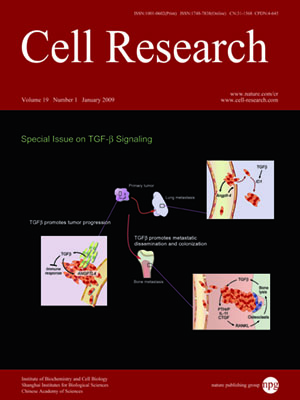
Volume 19, No 1, Jan 2009
ISSN: 1001-0602
EISSN: 1748-7838 2018
impact factor 17.848*
(Clarivate Analytics, 2019)
Volume 19 Issue 1, January 2009: 58-70
REVIEWS
Endocytic regulation of TGF-β signaling
Ye-Guang Chen
State Key Laboratory of Biomembrane and Membrane Biotechnology, Department of Biological Sciences and Biotechnology, Tsinghua University, Beijing 100084, China
Correspondence: Ye-Guang Chen,(ygchen@tsinghua.edu.cn )
Transforming growth factor-β (TGF-β) signaling is tightly regulated to ensure its proper physiological functions in different cells and tissues. Like other cell surface receptors, TGF-β receptors are internalized into the cell, and this process plays an important regulatory role in TGF-β signaling. It is well documented that TGF-β receptors are endocytosed via clathrin-coated vesicles as TGF-β endocytosis can be blocked by potassium depletion and the GTPase-deficient dynamin K44A mutant. TGF-β receptors may also enter cells via cholesterol-rich membrane microdomain lipid rafts/caveolae and are found in caveolin-1-positive vesicles. Although receptor endocytosis is not essential for TGF-β signaling, clathrin-mediated endocytosis has been shown to promote TGF-β-induced Smad activation and transcriptional responses. Lipid rafts/caveolae are widely regarded as signaling centers for G protein-coupled receptors and tyrosine kinase receptors, but they are indicated to facilitate the degradation of TGF-β receptors and therefore turnoff of TGF-β signaling. This review summarizes current understanding of TGF-β receptor endocytosis, the possible mechanisms underlying this process, and the role of endocytosis in modulation of TGF-β signaling.
Cell Research (2009) 19:58-70. doi: 10.1038/cr.2008.315; published online 2 December 2008
FULL TEXT | PDF
Browse 1907


